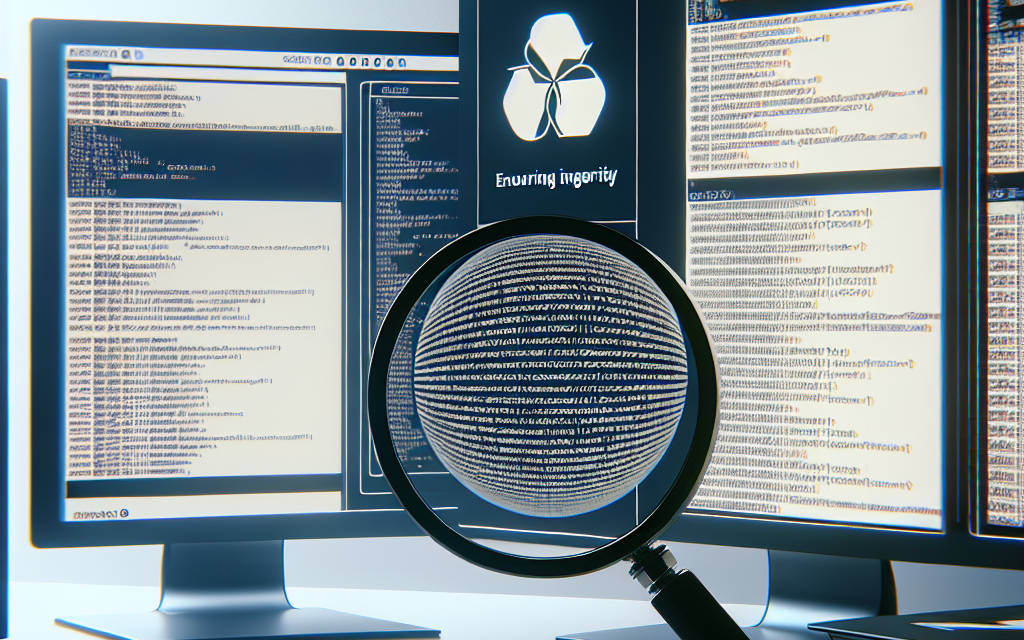In today’s fast-paced IT landscape, infrastructure as code (IaC) has become a cornerstone for deploying and managing infrastructure efficiently. However, with the increasing adoption of IaC comes the heightened risk of introducing vulnerabilities and misconfigurations through code changes. This article explores best practices for ensuring the integrity of infrastructure code changes on Linux servers, focusing on verification techniques, tools, and workflows that can safeguard your infrastructure.
The Importance of Code Integrity
Ensuring the integrity of infrastructure code is critical for several reasons:
- Security: Poorly managed infrastructure code can introduce security vulnerabilities, making systems susceptible to attacks.
- Compliance: Many industries require strict adherence to regulatory standards, which necessitate the verification of infrastructure changes.
- Stability: Misconfigurations can lead to server crashes, downtime, and a poor user experience.
- Collaboration: In multi-team environments, establishing a verification process helps ensure that all code adheres to the same standards.
Thus, verifying infrastructure code changes is not merely a best practice; it is essential for maintaining the reliability and security of your systems.
Best Practices for Verifying Infrastructure Code Changes
1. Use Version Control
Version control systems (VCS) like Git enable you to track changes in your infrastructure code. By maintaining a detailed history of changes, you can easily identify when and where issues are introduced.
- Branching and Merging: Use branches for features or fixes. Once changes are complete, merge them into the main branch after thorough review and testing.
- Pull Requests: Encourage team members to submit pull requests for code reviews before merging. This promotes collaboration and fosters the active participation of multiple team members.
2. Implement Automated Testing
Automated testing is pivotal in confirming that your infrastructure code functions as intended.
- Unit Tests: Write unit tests for your modules to ensure basic functionality.
- Integration Tests: Test interactions between different components of your infrastructure to verify that they work together seamlessly.
- Static Analysis: Utilize tools like
tflint,terraform validate, oransible-lintto identify potential issues in your code before deployment.
3. Use Infrastructure Testing Frameworks
Frameworks such as Terratest and KitchenCI allow you to create test cases for your infrastructure code. They can help automate the deployment of test environments, so you can run assertions against actual infrastructure.
- Terratest: Written in Go, Terratest allows you to write tests for your Terraform code, verifying resource creation and configuration.
- KitchenCI: Ideal for configuration management tools like Ansible, it enables the testing of configurations on various platforms.
4. Continuous Integration / Continuous Deployment (CI/CD)
Implementing a CI/CD pipeline will automate the process of verifying code changes before deployment. Popular tools include Jenkins, GitLab CI, and CircleCI.
- Pipeline Stages: Create distinct stages for building, testing, and deploying your infrastructure code.
- Integration with Testing Tools: Integrate your testing frameworks in the CI/CD pipeline to automatically run tests upon code commits.
5. Use Configuration Management Tools
Tools like Ansible, Puppet, and Chef help you manage your infrastructure as code. These tools come with built-in features to verify configurations.
- Idempotency: Ensure that applying the code multiple times does not change the state of the infrastructure unless explicitly intended.
- Desired State Configuration: Use these tools to define the desired state of your infrastructure, allowing for automatic reconciliation of existing configurations with the defined state.
6. Monitor and Audit Changes Continuously
Once your infrastructure is deployed, continuous monitoring and auditing are crucial.
- Log Management: Use tools like ELK Stack or Splunk to analyze logs for suspicious activities related to code changes.
- Infrastructure Monitoring: Tools like Prometheus or Grafana can help monitor the behaviors of your applications and infrastructure, providing insight into how changes affect performance and downtime.
7. Leverage Cloud Provider Tools
Most cloud providers offer tools for monitoring and maintaining the integrity of cloud resources.
- AWS Config: Monitor configuration changes of your AWS resources, ensuring compliance with internal policies.
- Azure Policy: Enforce organizational standards and assess compliance at scale.
Conclusion
Verifying infrastructure code changes is essential for maintaining the integrity, security, and performance of your Linux servers. By following the best practices outlined in this article, such as utilizing version control, implementing automated testing, and adopting CI/CD pipelines, organizations can significantly minimize risks associated with code changes. Ultimately, embracing these practices not only ensures the reliability of your infrastructure but also promotes a culture of quality and security within your development teams.
By investing time and resources in proper verification processes, you’ll empower your team to manage infrastructure more efficiently, while ensuring that your systems remain stable and secure.





